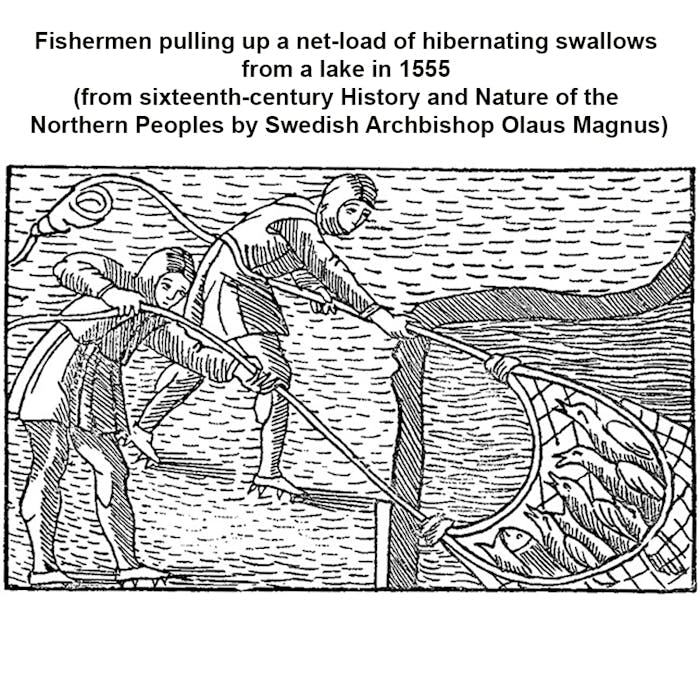
The mysterious case of the disappearing swallows
The appearance of the swallow in the warmer months baffled naturalists for centuries. Where did they go in the winter? In the late 18th Century, naturalists in Britain became quite obsessed with the finding out the answer.
Most believed that swallows hibernated, in a similar way to amphibians, finding holes and cracks to hide in. Many tales supported this, such as the story in 1785 of farm workers, who while digging out a fox near Whitby, found “whole bushels of swallows in a torpid condition”.
Another common belief was that swallows went into ponds and waterways, over-wintering in the mud. This arose because folk saw the swallows roosting in the reeds beside the water in the evening but found that they had completely disappeared the following morning.
The famous Scottish surgeon John Hunter (1728-1793), who was also one of the most distinguished scientists of the day, decided that he would test this scientifically. So, during the autumn months he built an aviary in which he put some swallows, providing them with water, reeds and mud. His observations, coupled with the fact that he also looked at the birds’ lungs, showed him that swallows did not differ from other birds and would indeed drown if put under water.
Meanwhile, Gilbert White (1720-1793) the famous parson-naturalist from Selborne in Hampshire, was communicating by letter with fellow naturalists in Europe, and they had come to the conclusion that these fascinating birds did indeed leave to spend the winter months in warmer climes.
However, it was not until 6 May 1911, when a small aluminium ring numbered B830 was placed onto a swallow chick’s leg, located in a nest in the porch of Mr Masefield, a 61-year-old solicitor from Cheadle, Staffordshire, that the mystery of where these birds actually over-wintered started to unravel.
Some 18 months later, a letter dated 27 December 1912 was sent by Mr C H Ruddock, proprietor of the Grand Hotel, Utrecht, Natal, South Africa. He wrote:
“Dear Sir, On December 23, a swallow was caught in the farmhouse of the farm Roodeyand, 18 miles from this town, with a metal label round its leg, with the words Witherby, High Holborn, London, and on the other side B830. The farmer, Mr J Mayer, took the label off and has it in his possession. As I am interested in birds of any sort and the migration of same, I shall be glad to know if you received this letter safely.”
So, all was revealed – the birds flew some 6,000 miles on migration between the UK and South Africa twice a year!
Further reading
Links to external websites are not maintained by Bite Sized Britain. They are provided to give users access to additional information. Bite Sized Britain is not responsible for the content of these external websites.
